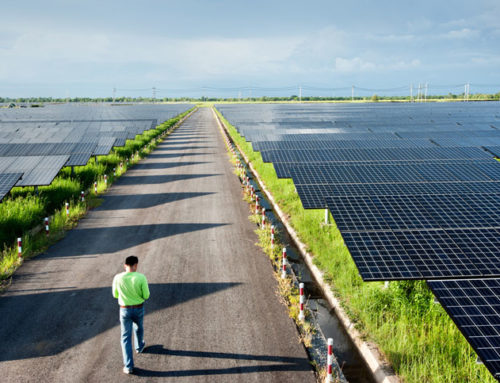Fueling China’s Future
China is a central element within the future of our global energy system because while the developing nations are winding down their energy consumption China is still increasing its energy consumption and CO2 emissions. All of the increase in demand in oil and energy over the coming decades is coming from emerging economies, with China and India accounting for over half of that increase. In contrast, oil and energy consumption in OECD economies continues its secular decline. This is because there has been decoupling of economic development from energy consumption in developed nations - meaning one dollar in GDP gains requires less energy - while this is not yet the case in China.
China is the top energy consumer in the world and projected to consume more coal in the coming decades than the rest of the world combined, it is the planet’s biggest CO2 emitter and home to the world’s most polluted cities in terms of air quality, but at the same time it is also home to the world’s largest renewable energy system. In the past few years China has promoted its effort to develop domestic clean energy technology but unfortunately this has not altered the fact and China’s economy is structurally dependent on coal and oil, that has been built up over decades. This dependency is likely to persist for at least the medium term, limiting policy efforts to change its overall energy mix. In 2011, for example, China produced 70% of its energy from coal, emitted more carbon dioxide than the next two largest countries combined (US and India) and emissions have been increasing by 10% a year, set to peak in 2030.
“How long China will take to get away from coal? I think that is going to be a long, long time. The reason for that is very simple, the coal fired power generation that consumes around half of the coal in China. Those coal plants are locked in, the reason I am saying that is they are all brand new coal fired plants and that is going to last for forty years.” - Boqiang Lin China Center for Energy Economics Research
Changing The Energy Mix
Over the past few years China’s solar and wind generation capacity has increased significantly. In 2005 this was just over one gigawatt today it is more than eighty and China seems likely to exceed its 2020 target of more than 100 gigawatts. Even so this enormous increase would likely represent no more than just seven percent of China’s total electrical capacity compared to nearly three-quarters from coal and oil.
In 2013, China led the world in renewable energy production, with a total capacity of 378 GW, mainly from hydroelectric and wind power. As of 2014, China leads the world in the production and use of wind power, solar photovoltaic power, and smart grid technologies, generating almost as much water, wind, and solar energy as all of France and Germany’s power plants combined. In 2016, China became the world’s largest producer of photovoltaic power, at 43 GW installed capacity. Since 2005, production of solar cells in China has expanded 100-fold, estimated at producing some 63% of the world’s solar photovoltaics.
The initial future target set by the Chinese government was 10 GW by 2010, but the total installed capacity for wind power generation in China had already reached 25.1 GW by the end of 2009. China aims to have 100 GW of wind power capacity by 2020. However, use of wind energy in China has not always kept up with the remarkable construction of wind power capacity in the country. As Chinese renewable manufacturing has grown, the costs of renewable energy technologies have dropped dramatically. Innovation has helped, but the main driver of reduced costs has been market expansion.
Gas will likewise play an increasingly important role in China’s energy mix. The International Energy Agency expects China’s gas demands to double in just the next five years. With the rise of unconventional energy sources and fracking, gas is set to grow rapidly in the coming decades working to replace coal globally. Almost all of the growth in shale output currently stems from the US, but there is currently a process of technology diffusion as other countries learn the techniques that they have pioneered. According to BP’s Energy Outlook report “growth in China’s shale gas production increases, such that by 2035, China is the largest contributor to growth in shale gas production.”
But like most countries China is in the hugely contradictory state of providing significant subsidies to its fossil fuel industry, an exercise that is very tempting to governments due to the critical role that energy plays in economic development and the political pressure to do so. Fossil fuels create many negative externalities, both on environment - such as through climate change - and on human health. The IMF estimates the combined subsidy of both these negative externalities and the direct payments made to the industry to be in the order of $2.3 trillion annually.
Energy Security
China sees renewables as a source of energy security, not just of carbon emission reductions. Chinese thinkers and politicians have long emphasized the importance self-reliance in the security of energy and resources this emphasis intensified after the founding of the People’s Republic in 1949 and in recent decades has been augmented by a focus on uninterrupted economic growth, the need to minimize disruptions to the country’s energy supply has fostered a preference for sources of energy abundant within China.
Energy coupled with economic growth, is one area that could potentially threaten political stability. The stability of the communist party relies on a growing economy for its continued legitimacy and power. China’s push into green energy has been recent and enthusiastic but its roots are still relatively shallow. By contrast China’s structural dependence on hydrocarbons is deeply entrenched both in the economy and in politics; it is difficult to see this change for many years, even with the environment and air quality currently moving to the top of the political agenda.
With its abundant coal reserves, energy had been largely a domestic issue in the past. China did not really begin to appreciate the significance of energy security until the late 1990s when its energy consumption reached a record high. Despite its attempts to diversify its energy sources, China has become increasingly dependent on Middle Eastern oil, which today accounts for some 60% of China’s imports. Many are beginning to wonder if it is safe to continue to do so.
China has now begun a search for oil production abroad. Since the turn of the century, Chinese companies have made huge investments in oversea oil and gas assets. If trends continue the way they are, the search for energy is going to draw China and other emerging economies into global political dynamics similar to those that the U.S. was drawn into during the 20th Century.
We can already see what this might look like by examining the current South China Sea dispute. This is a region that China has already dubbed the “second Persian Gulf.” The state-owned China Offshore Exploration Corp. plans to spend US$30 billion in the next 20 years to exploit oil reserves in the region. Just as importantly, one third of seaborne oil passes through this area of the South China Sea.
Conclusion
So what is the conclusion that we can draw from all of this, maybe it is this, China is a mix of both hope and despair for the future of energy and environment. Maybe Richard Lester and Edward Steinfeld’s paper “China’s Real Energy Crisis” sums up best the internal situation in China with respect to energy policy: “Key decisions about China’s physical and technological infrastructure are still being made. Unfortunately, despite their profound consequences for Chinese long-term energy development and global resource sustainability, these decisions are being made on an ad hoc basis primarily by grassroots actors with neither the incentive nor the ability to think about the “big picture.” What many outsiders take to be the deliberate result of Chinese national “energy strategy” is in fact better understood as an agglomeration of ad hoc decisions by local governments, local fuel and power producers, and local industrial con- cerns, few if any of whom have national interest in mind, and most of whom are rushing to fill a void left by the absence of national-level energy strategy. Amidst surging energy demand and frenetic local decision making, agencies and individuals in the central government are scrambling simply to keep abreast of developments on the ground.”





























